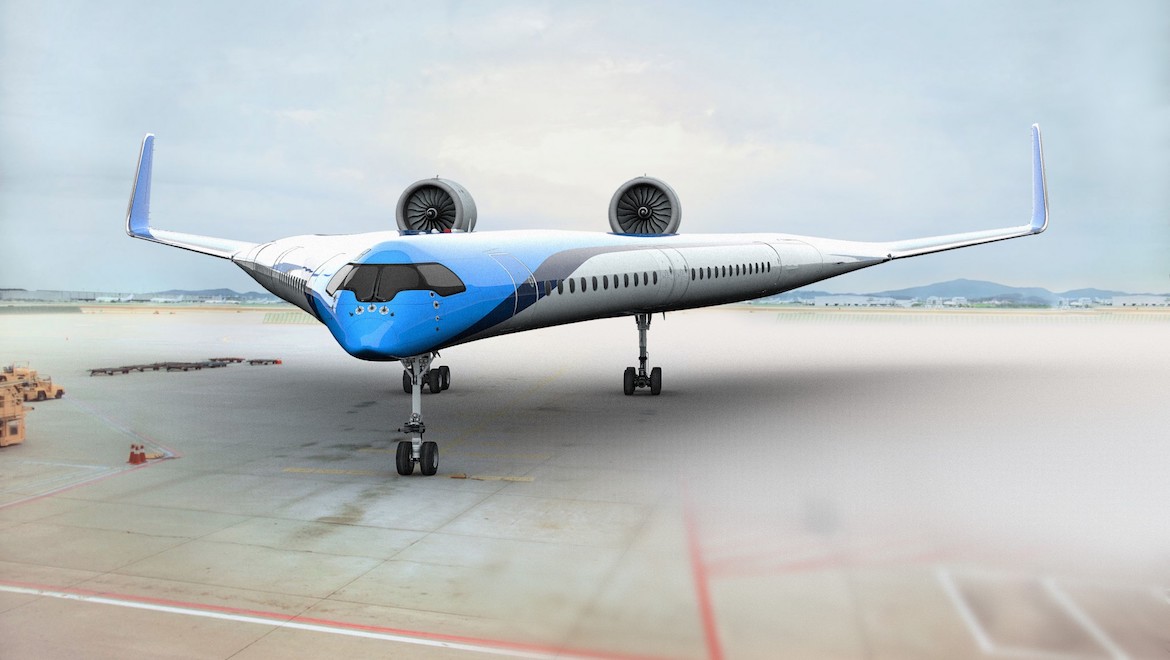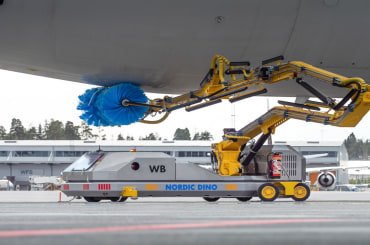
KLM Royal Dutch Airlines has made a move to support research into the innovative “Flying-V” concept.
The airline has entered a partnership with Delft University of Technology (TU Delft) to investigate the technology to position itself for the development of sustainable long-distance flight.
The agreement was signed on June 3 by KLM chief executive Pieter Elbers and TU Delft Dean of the Faculty of Aerospace Engineering Professor Henri Werij.
Elbers said airlines had huge responsibility to the planet, which KLM was taking very seriously.
“We are proud of our progressive cooperative relationship with TU Delft, which ties in well with KLM’s strategy and serves as an important milestone for us on the road to scaling-up sustainable aviation,” Elbers said in a statement.
In announcing the agreement, KLM said the Flying-V design promised the same passenger load and cargo volume – 314 passengers and 160 cubic meters in standard configuration – as the Airbus A350, the cream of the current range of airliners.
KLM said it would mark its 100th anniversary by showing a flying scale model of the aircraft and revealing a full-size section of its interior at the KLM Experience Days at Amsterdam Schiphol Airport in October.
The aircraft design is reminiscent of the “flying wing” concept that has cropped up continually over many decades, including the experimental designs trialled by the Luftwaffe during World War 2, the Armstrong Whitworth A.W.52 prototype flown in the UK in the late 1940s and, more recently, the Northrop Grumman B-2 Spirit, better known as the Stealth Bomber.
However, unlike conventional flying wing designs which house the crew in a central pod, the proposed Flying-V aircraft would integrate the passenger cabin, the cargo hold and the fuel tanks in the wings. An image of the proposed design shows rows of passenger cabin windows along the leading edge of the wings.
The resulting aerodynamic improvement and lower weight mean the Flying-V is expected to consume 20 per cent less fuel than the current benchmark for long-haul flights, the Airbus A350.
Werij said radical energy-efficient designs like the Flying-V are important, but so are new forms of propulsion.
“Our ultimate aim is one of emission free flight. Our cooperation with KLM offers a tremendous opportunity to bring about real change,” Werij said.
In April, the last remaining Northrop N-9M, the so-called flying wing, crashed in California, claiming the life of the pilot. The aircraft, registered N9MB, operated by the Planes of Fame Air Museum based in Chino, crashed shortly after takeoff from Chino Airport into the grounds of a prison rehabilitation facility in Norco.
More information about the Flying V can be found on the TU Delft website.
VIDEO: A look at the Flying V concept courtesy of TU Delft and KLM.












